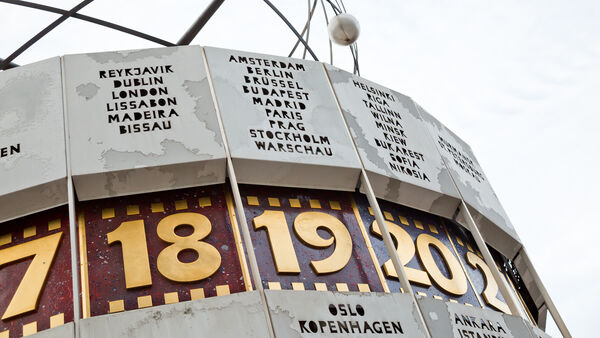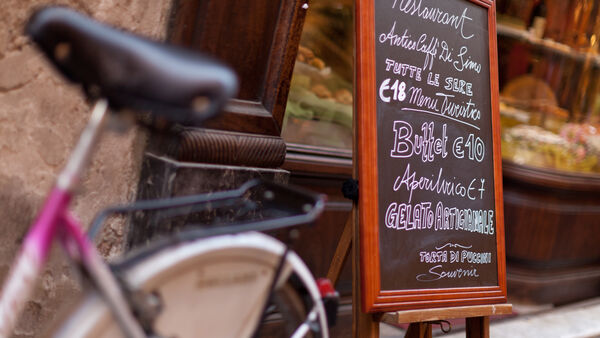European Numbers and Stumblers


By Rick Steves
Europeans convey numerical information differently than we do, from measurements to schedules and even dates. Getting comfortable with the 24-hour clock, weather forecasts in Celsius, and other differences will save needless confusion when planning itineraries and making reservations.
Time and Date
The 24-hour clock (military time) is used in any official timetable. This includes bus, train, and tour schedules. Learn to use it quickly and easily. Everything is the same until 12:00. Then, the Europeans keep on going — 13:00, 14:00, and so on. For any time after noon, subtract 12 and add p.m. (18:00 is 6 p.m.).
To figure out the time back home, remember that European time is generally six/nine hours ahead of the East/West Coasts of the US. (These are the major exceptions: British, Irish, and Portuguese time is five/eight hours ahead; Greece and Turkey are seven/ten hours ahead.) Europe observes Daylight Saving Time (called "Summer Time" in the UK), but on a slightly different schedule than the US: Europe "springs forward" on the last Sunday in March (three weeks after most of North America) and "falls back" the last Sunday in October (one week before North America). For a handy online time converter, use the world clock app on your phone.
When it comes to dates, remember — especially when making reservations — that European date order is written day/month/year. Christmas 2025, for example, is 25/12/25 instead of 12/25/25, as we would write it. Also, European wall calendars tend to start on a Monday, not Sunday.
Written Numbers
A European's handwritten numbers look different from ours. The number 1 has an upswing, and the number 4 often looks like a short lightning bolt. If you don't cross your 7, it may be mistaken as a sloppy 1, and you could miss your train. Don't use "#" for "number" — it's not common in Europe.
On the Continent, commas are decimal points and decimals are commas, so a euro and a half is €1,50 and there are 5.280 feet in a mile. (Britain and Ireland use commas and decimal points like North America.)
Metric Conversion
Expect to confront the metric system in your European travels. Here are some easy ways to guesstimate metric conversions: Since a meter is 39 inches, just consider a meter roughly equivalent to a yard. A kilometer is a bit more than a half-mile (1 kilometer = 0.62 mile). A liter is nearly the same as a quart (1.056 quarts, to be exact) — about four to a gallon. A centimeter is about half the distance across a penny (1 inch = 2.54 centimeters), while a millimeter is about the thickness of a penny (1 inch = 25 millimeters). In markets, it's handy to know that 1 ounce = 28 grams, and 2.2 pounds = 1 kilogram.
Temperature Conversion
Europeans measure temperatures in degrees Celsius (zero degrees C = 32 degrees F). To roughly convert to Fahrenheit, it's easiest (if not perfectly accurate) to double the Celsius temperature and add 30. So, if it's 27° C, double to 54 and add 30 to get 84° F (it's actually 81° F, but that's close enough for me). To convert Fahrenheit to Celsius, just subtract 30 and divide by 2. A memory aid: 28° C = 82° F — balmy summer weather.
Addresses and Floors of Buildings
House numbers often have no obvious correlation to what's across the street, and rarely follow the odd/even convention for different sides of the street that"s so common in North America (for example, in Italy, #28 may be directly across the street from #2).
Floors of buildings are numbered differently in Europe. The bottom floor is called the ground floor, and what we call the second floor is a European's first floor. So, if your hotel receptionist hands you a key and says your room is on the second floor, think of it as the second floor up (what Americans would call the third floor). In the elevator, push whatever's below "1" to return to the ground floor.

